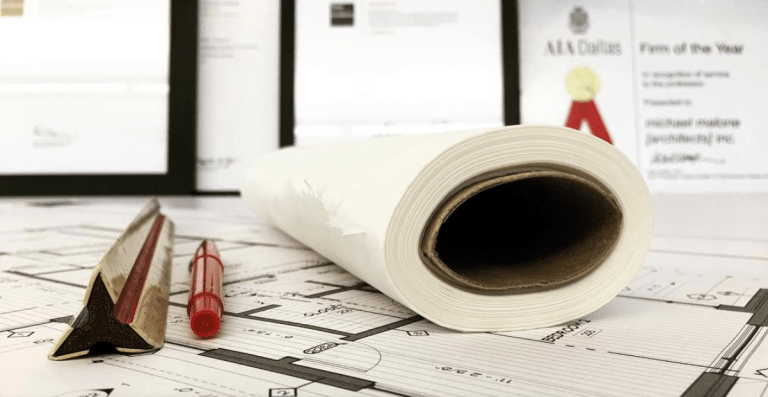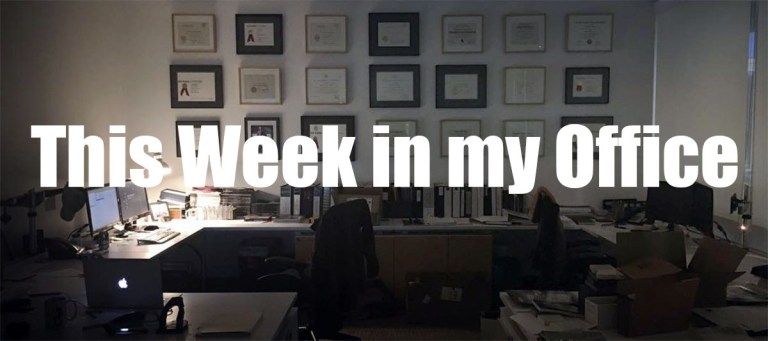In the beginning, when you are starting to plan your budget for building a new house, residential construction costs are not that complicated unless you really want to make them that way. There are some general broad stroke pieces of information that if you know them, you will not be surprised when it comes time to plan your budget.
Since all these costs can be screwed up in any number of ways, take all this information with a grain of salt. It would seem reasonable to assume that masonry construction in the border states, with the amazing amount of readily available skilled labor, will cost less than masonry construction somewhere in non-border states. Texas is also a right-to-work state and we don’t face some of the typical cost issues that unionized states enjoy. So now that I have my disclaimer out of the way, let’s talk numbers!

Hard Costs vs. Soft Costs [3:10 mark]
When starting to plan for a construction budget, there are some items that you should plan on including in your budget, which fall into major categories of hard costs and soft costs. Let’s start by identifying that hard costs are the physical assets that you need to acquire to complete your construction project. Some examples of hard costs are:
• Providing utilities to the site if not currently present
• Site Preparation (clearing away trees, stabilizing soil, cutting and filling to grade the site, etc.)
• Demolition (if there are structures currently on the lot)
• Construction costs, including foundation, framing, electrical, mechanical, plumbing, interior finishes, exterior finishes, lighting, cabinetry, appliances, plumbing vessels, etc.)
• Construction Management Fees and Site Superintendent Fees (in my area of the world, these are typically set at 10% to 20% of the total construction cost)
• Sales Tax
• Permits
• Hardscape (exterior built items i.e. sidewalks, driveways, patios, pools, etc.)
The list above are large categories that will represent most, but not all of the total project costs. These are the expenses that are generally not considered part of the construction budget. Hopefully, you and your architect would discuss these matters up front, I know I would. If you say your construction budget is $500,000, most would literally consider that to be the construction budget, not the project budget. Please make this clear because the relationship between architect and client won’t be all that great when the disappointment sets in if you don’t get this squared away up front. So now we are getting into the soft costs, which are simply described as an expense item that is not considered a direct construction cost – items such as:
• Architectural Fees – I have covered architectural service fees in depth (read or listen to it here: Architectural Fees) but as a rule of thumb, you should plan on paying somewhere between 6% of construction costs for a minimal set of construction documents up to 15% for full service set of construction documents.
• Consultant Service Fees:
• Interior Designer – provide a great service but can add significant costs to a project. I used to work in an interior design office and I am aware that interior designers typically included a handling/processing fee on the FF+E (fixtures, furnishings, and equipment) that they are responsible for selecting. A good interior designer can be a fantastic addition to your design team but a conversation on compensation and deliverables should be a part of the initial conversations.
• Structural Engineer – very cost effective service to retain and in some cases, a mandatory consultant to retain. We use a structural engineer on every project we design, partly because we carry professional insurance that requires it, but a structural engineer will design a foundation specifically to the soil conditions on your site. Depending on the complexity of the site conditions and the house design, their fees always seem to run around 1-3% of the cost of construction. Even on our most complicated and large custom homes, we seem to pay the same approximate amount per square foot as our simpler projects.
• Energy Consultant – we don’t use these very often simply because we have been using energy conserving strategies (other than not building small homes) for years; it’s ingrained into our process. One of the items we are seeing now is that cities have different “green initiatives” and Energy Consultants can provide evaluation and inspection services that satisfy the 3rd party requirements of the city’s inspection process. When we retain an energy consultant, the bids we receive typically range between $500 to $1,500 depending on the complexity of the project and the difficulty involved with receiving a passing grade.
• Landscape Architects – typically set up their fee structure similarly to architects but at a lower percentage (which makes sense since their scope on these projects is substantially less involved). The ones we work with most frequently are straight-up landscape architects which means that they do NOT do the landscape installation themselves. I have found over the years that I prefer to retain landscape architects who do the design and prepare the documentation for the general contractor to contract and install – I like the separation of responsibilities. Normally the fees are assembled by phase and then charged either hourly to completion or as a percentage of completion.
What you Get and for How Much [25:07 mark]
Finally, let’s cover something a little more tangible, like what do you get and for how much? I mentioned in the beginning that there are some very broad stroke assumptions you or your design professional can make that will get you very close to a realistic construction budget expectation. We use these costs per square foot references all the time during the schematic and design development phase and it’s rather remarkable how often they bear out. It should go without saying but I’ve been writing articles that go on the internet long enough to know that you still have to say it. These “rule of thumb” value does not work everywhere – they generally only work where the vast majority of my projects get built. However, you can extrapolate one set of values from this list to your area and compensate accordingly for the other categories. There are simply too many variables for me to break this down for all places, all project levels, varying degrees of acceptable quality, and all contractors. If you wanted to hire me to do a house for you, we would work all this out up front and we would know ahead of time whatt we were working towards.
Good? Great – let’s get to it.
$200 per Square Foot
This is the lowest amount we generally design, not on purpose but we just don’t seem to attract the clientele who are looking for something less expensive. $200/sf will get you a brick house, composition shingle roof, wood windows depending on the brand) but most likely vinyl windows, ogee profile galvanized gutters and a slab on grade foundation and a fairly generic kitchen appliance package.
$250 per Square Foot
This used to be the cost range where most of my projects were designed but with rising construction costs, this is becoming more difficult. $250/sf will get you Brick house with some contrasting cast stone features, standing seam metal paint grip roof, clad wood windows (Marvin or Weathershield type brands – both are excellent btw), 1/2 round paint grip gutters, and under some conditions a pier and beam foundation.
This is a great time to try and understand what quality and quantity are and how value plays a role between the two. I wrote a pretty concise and informative post on this very topic back in 2011 called “A Big Bag of Nothing” and I think it might be worth your time to check it out. You should also read “The Common Law of Business Balance” because it explains why you can’t pay less and get more.
$350 per Square Foot
At this price point, you can do just about anything practical that you could think of. I say “practical” because importing Tibetan orphan monks to stamp gold leaf on the ceiling with their feet will fall into a higher price category, not to mention that it isn’t very practical. $350 will get you a brick house, or masonry stucco on CMU block, standing seam metal paint grip or tile roof, high end clad/wood windows, 1/2 round copper gutters, and a pier and beam foundation. You will also be at the point where you should expect high-end stainless steel appliances, designer plumbing vessels, and some extremely custom fabricated pieces i.e. steel framed entry doors, specialty feature lighting, and exposed floating staircases.
$425 per Square Foot (and up)
Bring on the monks and other artisans from around the world! At $450/sf, the exterior can be entirely 4″ thick cut Hadrian limestone panels on CMU block walls, true slate roof, whole house integrated art and audiovisual controls, custom steel windows, etc., specialty energy features like geothermal, handmade tiles, etc. I am always amazed when I see houses that cost $500/sf and more – you really have to put some effort into getting the cost up that high … but I would love to give it a go.
As rules of thumb, these are okay to use but there are always nuances that need to be taken into consideration. Complications associated with the site, is this a union state, urban versus rural areas, the cost of skilled labor (for example, in the last 10+ years, labor rates in Dallas have gone up about 12% faster than material costs while in comparison, that number is around 30% in New York.)
I should also point out what it really means when someone says things will cost a certain dollar amount per square foot. This is for the total construction cost, which typically includes the contractor fees, but only uses the amount of air-conditioned square feet of the project. For example, if you have a house with 2,000 square feet of air-conditioned space with an additional 400 square feet of garage and 250 square feet of a covered exterior patio, the project would still be the 2,000sf x $200/sf (or whatever) for a construction cost estimate of $400,000. This next part is where experience kicks in – when do you start including exterior spaces and garages? Historically the cost per square foot would take these non-air-conditioned spaces into consideration and are built into the overall cost; but now that garages are getting bigger and exterior living spaces are becoming more developed and include more bells and whistles, they need some additional consideration. When these spaces get developed as real programmed space, we add around $60 – $100 per square feet extra to make sure that there aren’t any surprises when the construction bids start coming in.

This Week in My Office [48:11 mark]
We have decided to add a new segment to the show – very exciting!! Since we apparently don’t have much spare time, that segment has been largely ignored … although I still like it and I don’t have any plans to get rid of it. In addition, we haven’t ever received any negative feedback on the “Hypothetical” segment of the show either, and I quite frankly enjoy them a lot, so we will be keeping it as well. What we HAVE received is some feedback that requested that we focus a little bit more on the day-to-day workings within our office, after all, this is the “Life of an Architect” podcast and there is some work-life banter that we have largely been ignoring. I will admit that this has somewhat been by design – at least on my part. This podcast is not intended to be a serial – meaning you can listen to whatever shows you want and in whichever order suits your fancy. Our challenge with this new segment is to keep it loose enough to allow flexibility to the people listening while providing the opportunity for people listening to get a glimpse into the workaday life in an architectural practice.
In this weeks segment, Andrew spends most of his week working specifications whereas Bob spent 3/5th’s of his week out of the office. Rather than explain it all here, you’ll have to listen to the episode to get the inside scoop.
Cheers,







